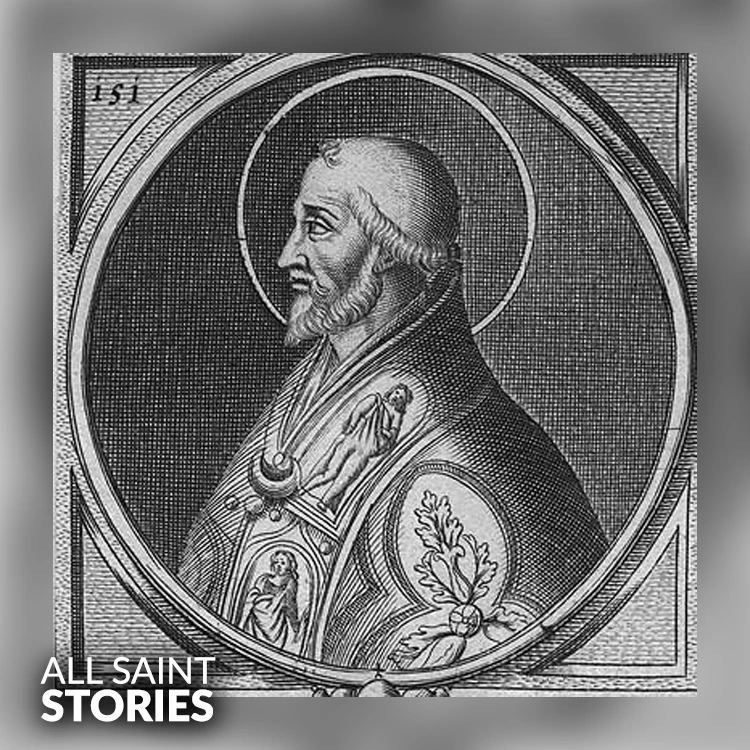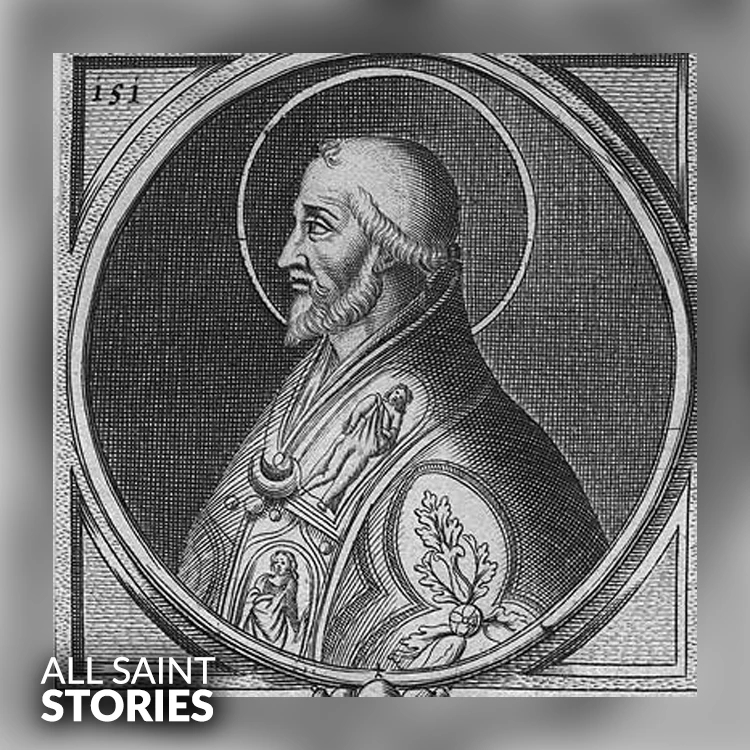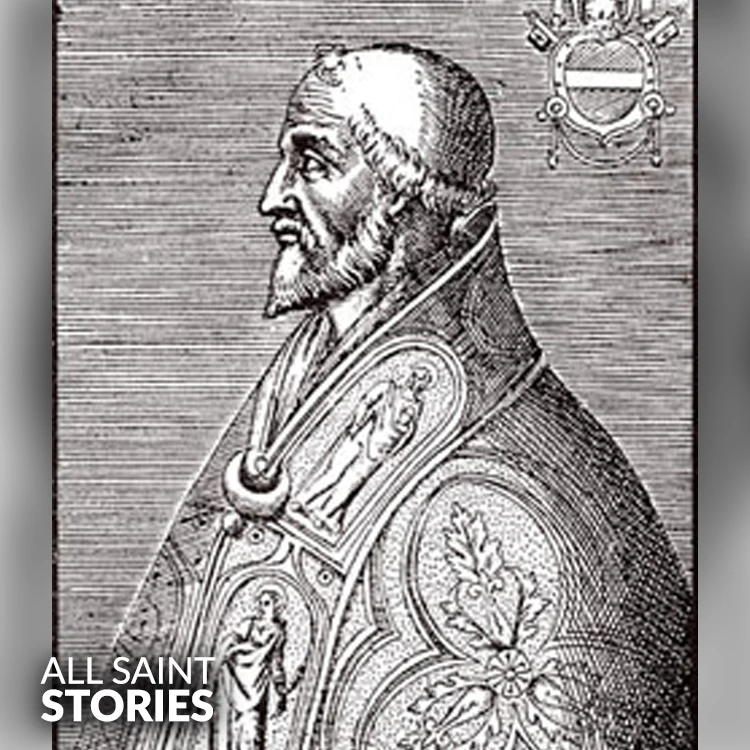Saint Pope Leo IX, faithful servant of God, you led the Church with wisdom and courage. Intercede for us, that we may follow your example of holiness, humility, and devotion. Help us to remain steadfast in our faith and committed to the truth of the Gospel. Pray for us, that we may live lives pleasing to God and be instruments of peace and unity in the world. Through Christ our Lord. Amen.
ST.LEO IX POPE
ST.LEO IX POPE

St. Pope Leo IX, born Bruno of Egisheim-Dagsburg in 1002 in what is now Germany, was elected Pope in 1049. As a reforming pope, he worked to restore discipline within the clergy, enforce clerical celibacy, and address the rampant simony (the selling of Church offices). He also took significant action to improve the relationship between the papacy and the Eastern Orthodox Church.
St. Pope Leo IX, originally named Bruno of Egisheim-Dagsburg, was born on June 21, 1002, into a noble family in Alsace, now part of France. A cousin of Holy Roman Emperor Conrad II, Bruno was raised with a strong religious and moral foundation. His early education and upbringing within the ecclesiastical and imperial court molded him into a disciplined and devout churchman. At a young age, he became a canon at Toul Cathedral and later was appointed Bishop of Toul in 1026, a position he held for over two decades. During his tenure as bishop, he gained a reputation for both administrative skill and a strong commitment to ecclesiastical reform, particularly in enforcing clerical celibacy and opposing simony.
In 1049, after the death of Pope Damasus II, Bruno was nominated as pope by Emperor Henry III. Remarkably, he insisted on traveling to Rome as a pilgrim rather than being enthroned by imperial authority alone. Upon arriving in Rome, his election was confirmed by the clergy and the people, and he took the name Leo IX. His approach marked a significant shift toward asserting papal independence and moral authority, setting the tone for the reformist energy of his papacy.
Once pope, Leo IX vigorously tackled widespread corruption in the Church. He focused on eradicating simony—the buying and selling of Church offices—and was a fervent enforcer of clerical celibacy. His dedication to these reforms helped lay the foundation for the Gregorian Reform movement that would flourish in the latter part of the 11th century. One of Leo IX’s hallmarks was his frequent travel; unlike most medieval popes, he personally visited key regions of Europe—including France, Germany, and northern Italy—to convene synods and enforce reform. This made him one of the most active and hands-on pontiffs of the era.
In addition to his internal Church reforms, Leo IX also had to confront serious external challenges. One of the most significant events of his papacy was the conflict with the Normans in southern Italy. In 1053, Leo led a papal army to resist Norman expansion but was defeated at the Battle of Civitate. Although taken captive, he was treated with respect by the Normans and allowed to continue his pontificate while under nominal house arrest in Benevento until his death.
Perhaps the most consequential development during Leo IX’s papacy was the rising tension between the Western and Eastern branches of Christianity. His efforts to assert papal primacy over the Eastern Church met resistance, particularly from Patriarch Michael Cerularius of Constantinople. The situation escalated when Leo’s legate, Cardinal Humbert, issued a bull of excommunication against the Patriarch, who responded in kind. This exchange in July 1054, shortly after Leo’s death, marked the formal beginning of the East–West Schism, which divided the Catholic and Orthodox Churches and has remained unresolved for centuries.
Leo IX died on April 19, 1054, and was buried in St. Peter’s Basilica. His canonization occurred in 1087 under Pope Victor III. Despite the political complexities of his reign and the tragic division of the Church during his pontificate, Leo IX is remembered as a devout, energetic, and courageous reformer who sincerely sought to purify and strengthen the Church. His legacy of reform paved the way for future efforts to restore integrity and spiritual discipline within the clergy and ecclesiastical institutions.
Video Not Found
The information on this website is compiled from various trusted sources. While we aim for accuracy, some details may be incomplete or contain discrepancies.
If you notice any errors or have additional information about this saint, please use the form on the left to share your suggestions. Your input helps us improve and maintain reliable content for everyone.
All submissions are reviewed carefully, and your personal details will remain confidential. Thank you for contributing to the accuracy and value of this resource.
Credits & Acknowledgments
- Anudina Visudhar (Malayalam) – Life of Saints for Everyday
by Msgr. Thomas Moothedan, M.A., D.D. - Saint Companions for Each Day
by A. J. M. Mausolfe & J. K. Mausolfe - US Catholic (Faith in Real Life) – Informational articles
- Wikipedia – General reference content and images
- Anastpaul.com – Saint images and reflections
- Pravachaka Sabdam (Malayalam) – Saint-related content and insights
We sincerely thank these authors and platforms for their valuable contributions. If we have unintentionally missed any attribution, please notify us, and we will make the correction promptly.
If you have any suggestion about ST.LEO IX POPE
Your suggestion will help improve the information about this saint. Your details will not be disclosed anywhere.
© 2025 Copyright @ www.allsaintstories.com




 English
English
 Italian
Italian
 French
French
 Spanish
Spanish
 Malayalam
Malayalam
 Russian
Russian
 Korean
Korean
 Sinhala
Sinhala
 Japanese
Japanese
 Arabic
Arabic
 Portuguese
Portuguese
 Bantu
Bantu
 Greek
Greek
 German
German
 Dutch
Dutch
 Filipino
Filipino